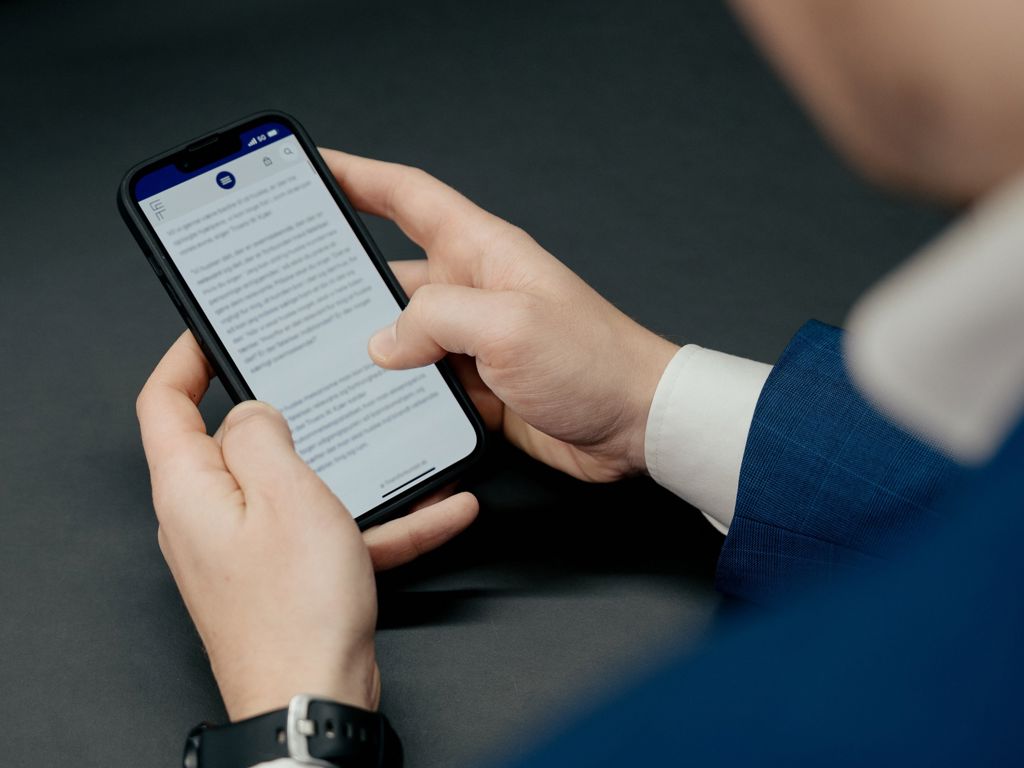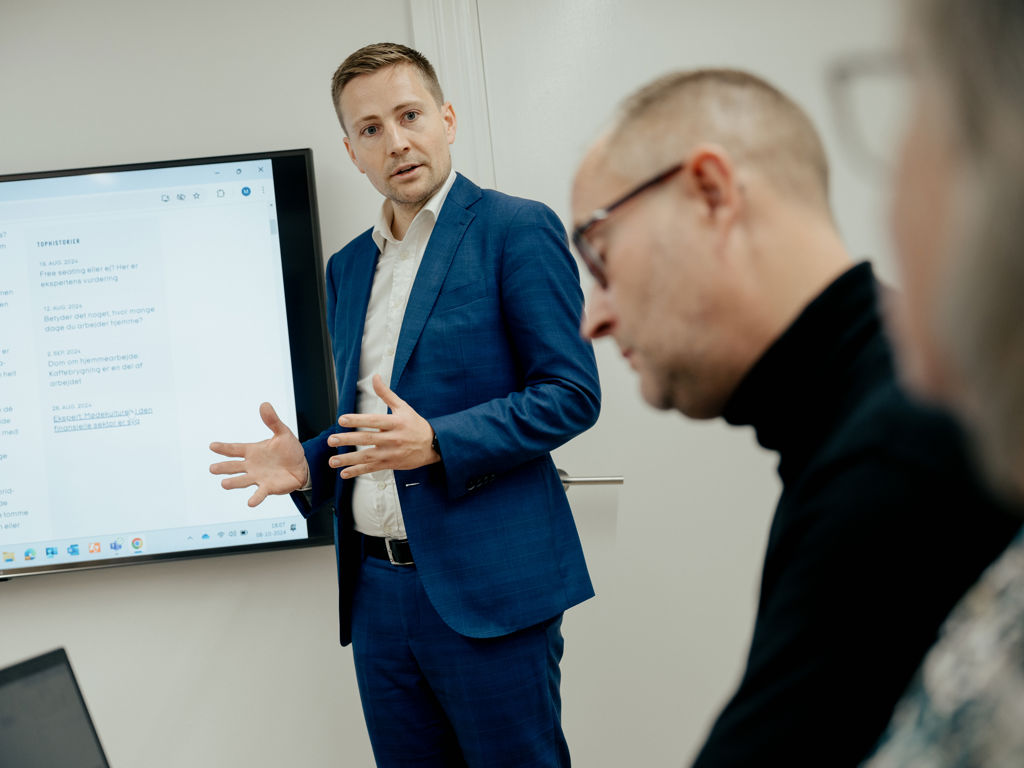"There will be more focus on the individual"
Private manager at Danske Bank Martin Søndermark Jepsen didn’t think he used performance metrics very much. He got smarter during a trial period with hidden measurements. Now the figures no longer play the main role in the dialogue with the employees and both job satisfaction and customer service have improved.
Our focus has shifted from numbers to behaviour and solutions. This leads to better job satisfaction - and better customer service.
This is how private manager Martin Søndermark Jepsen summarises his experiences with working with hidden metrics and KPIs.
He is the leader of a front-end team in Danske Bank in Aarhus. Metrics were part of daily life here until the team participated in Future Work Lab’s trial.
For six weeks, they had to work entirely without being presented with the usual measurements of talk time, customer satisfaction, completed calls etc.
“I never thought I used the performance metrics very much. But once they were gone, I had to admit they took up a lot of space. The figures were the entry point in my conversations with the employees”, says Martin Søndermark Jepsen, who is the manager of 17 employees.
Rewarding reflections
He found it thought-provoking that the conversations had to be filled with something else.
This is where the daily five-minute reflection on the working day came into the picture – part of the experiment that Martin Søndermark Jepsen was otherwise known to be sceptical of:
“I thought: What can that provide?” But it provided a lot and supported my dialogue with the employees. There was a greater focus on the individual and the concrete behaviour and more words and facets entered the conversation”, he notes.
The employees’ reflections reflected what it is that fills daily life – such as when a few angry customers dominate the day and completely overshadow the fact that there were 78 who were satisfied.
The team also reflected together, and talking about everyday ups and downs and swapping solutions provided a significant boost to team spirit.
Room for more nuance
After the end of the project, Martin Søndermark Jepsen gained access to the figures again. But they are not used the same as before.
“Now it’s up to the employees whether they want their own figures provided and whether we should talk about the figures when we hold 1:1 conversations. Most have opted out of them, though a few get them monthly”, says the private manager.
He himself uses the metrics to keep an eye on whether anything is missing. But it is solutions and not numbers that are in focus.
“We still have to provide the best possible customer service in the shortest possible time, but now it is more individual how we achieve that goal. If we deliver what we have to deliver as a team, there is room for nuance underneath, and different core competencies can come into play”, says Martin Søndermark Jepsen.
“If you put a spotlight on what people are good at, it also illuminates what they are less good at”, he notes and is pleased that the approach has simultaneously increased both customer satisfaction and job satisfaction.
“If you’re happy with your job, you also provide better customer service”, he notes.
Try it – even if it causes anxiety
Martin Søndermark Jepsen has 20 years of experience as a manager and sees it as a plus to have had his management style challenged.
“It made me anxious right at first to drop the metrics. Still, I would advise others to do the same if they want to try it out. And then remember the reflection time, because it’s important”.
The hidden measurements are only a small piece of the efforts to create a better workplace. We have many other initiatives in play, he adds.
Faktaboks tekst





